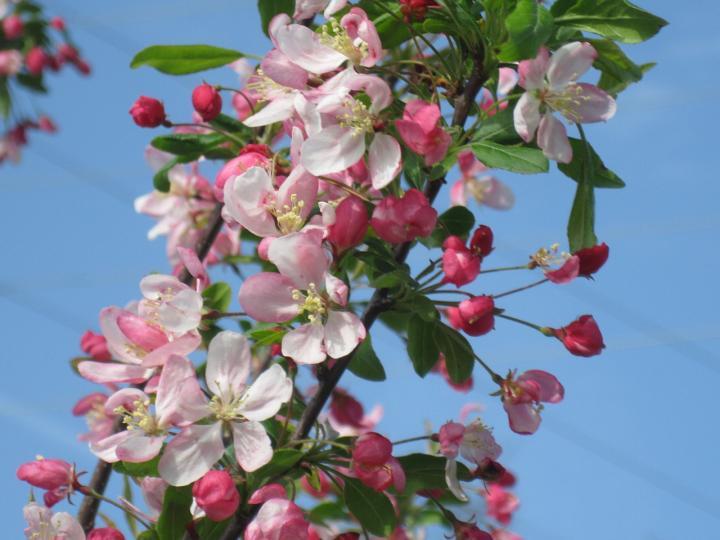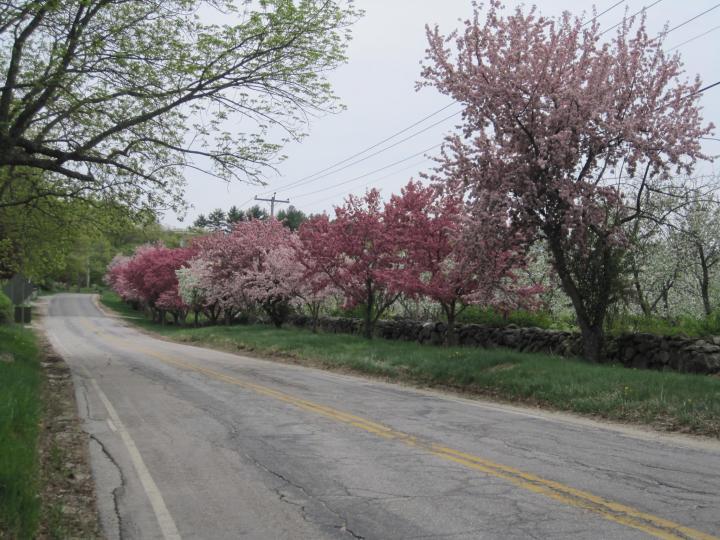






Everyday I pass a roadside row of old crabapples on my way to work. They are beautiful trees in all seasons.
The bronze-green foliage turns a deep maroon in autumn, the tiny red apples decorate the gnarled bare limbs for most of the winter, and in the springtime the trees are loaded with blossoms in varying shades of pink.
These dependable old trees bloom right on schedule each year, just in time for Mother’s Day.
There is so much variation among flowering crabapples that there is a perfect one for almost every situation. Along with different heights, there are shapes like oval, round, spreading, and weeping forms to choose from. Blossoms can be single, semi-double, or double (the singles tend to be the most fragrant) and the flowers come in colors ranging from pure white to pink, red, and purple.

Often the buds are a darker shade than the flower giving the tree more than one color as they open. Leaf colors vary from dark green which turns gold in the fall to bronze, red, and dark purple-red leaves that mature to a deep burgundy in autumn.
Bear in mind that some experts say the dark-leaved varieties are more susceptible to disease. Crabapples are subject to the same problems as regular apple trees. Scab, fire blight, powdery mildew, leaf spot, rust, aphids, spider mites, webworms, and Japanese beetles all conspire to spoil the fun to say nothing of nibbling mice, rabbits, and deer.
Technically any apple tree bearing fruit smaller than 2 inches in diameter is a crabapple. Most of these tiny apples are too tart to eat but with enough sweetener they make a flavorful jelly. Fruits also come in a range of colors including green, red, orange, yellow, burgundy, maroon, or purple. If cleaning up fallen apples is a chore you’d rather not deal with, there are sterile cultivars like ‘Spring Snow’ that have gorgeous blossoms but bear no fruit.
Here are 7 trees recommended by the International Crabapple Society:
Crabapples are easy to grow and have everything you could want in an ornamental plant—a nice shape, fragrant flowers, attractive foliage, fruit, and hardiness. If you have other apple trees, you can use a crabapple as a pollinator for them.
Branch out and plant a flowering crab!
~ By Robin SweetserGet inspired by Robin Sweetser's backyard gardening tips. Robin has been a contributor to The Old Farmer's Almanac and the All-Seasons Garden Guide for many years. She and her partner Tom have a small greenhouse business and also sell plants, cut flowers, and vegetables at their local Farmer's Market.
Copyright © www.100flowers.win Botanic Garden All Rights Reserved